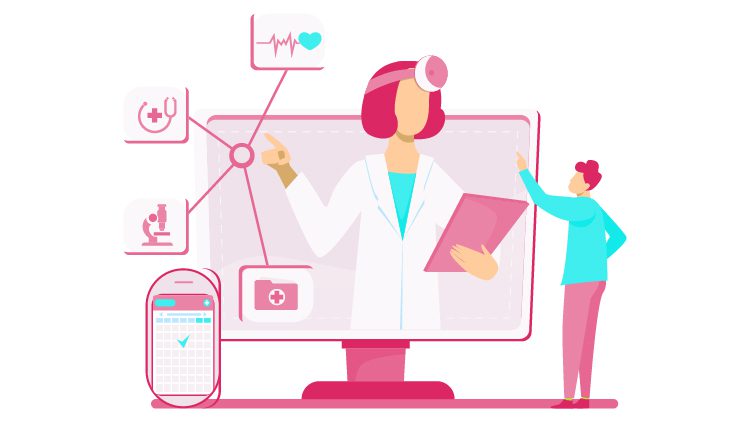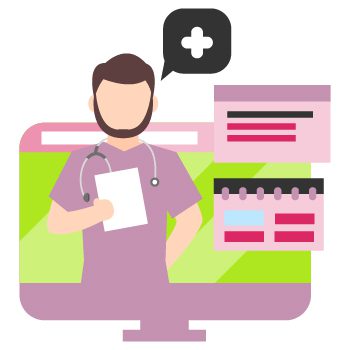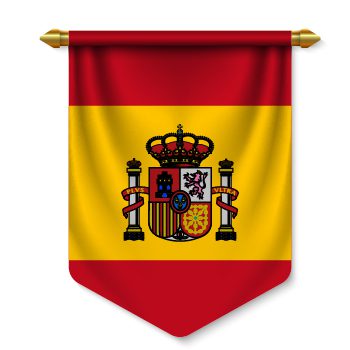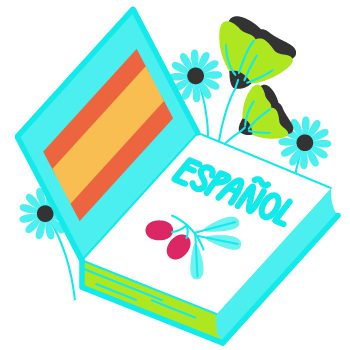
Medical translations from Spanish to English
The importance of accurate medical translations
Accurate medical translations are crucial in the healthcare industry. Medical professionals rely on accurate translations to understand patient histories, medical reports, and consent forms. A mistranslated term or phrase can seriously affect patient care, treatment, and outcomes.
Inaccurate translations can lead to misunderstandings, misdiagnoses, and improper treatments. For example, if a medical report is mistranslated and essential information is lost, it can result in delayed or incorrect treatment. Similarly, if a consent form is not translated accurately, it can lead to patients receiving a treatment they did not consent to.
That is why it is essential to work with specialized translators who have expertise in medical terminology and can accurately convey the meaning and context of medical documents. These translators not only have a deep understanding of the source and target language but also know medical practices and protocols.
By ensuring accurate translations, healthcare professionals can provide better patient care, pharmaceutical companies can effectively communicate product information, and insurance companies can accurately process claims. Accurate translations are not just about converting words from one language to another; they are about preserving the meaning and context of the original document in the target language.


Challenges in translating medical terms
Translating medical terms can present several challenges, particularly when translating Spanish to English. Medical terminology is highly specialized and often complex, requiring translators to have a deep understanding of both languages and the specific terminology used in the medical field.
One of the main challenges is that medical terms can have different meanings or variations in different languages. A term commonly used in Spanish may not have an exact equivalent in English or vice versa. Translators need to be able to accurately convey the intended meaning of the term while also considering the cultural and linguistic differences between the two languages.
Another challenge is that medical terms can be highly technical and scientific, making them difficult to translate without the proper expertise. It is crucial for translators to have a strong background in medical terminology and to stay up to date with the latest advancements in the field. This ensures they can accurately translate medical documents and maintain the same precision and clarity as the original document.
Additionally, medical records and documents often contain abbreviations, acronyms, and jargon that can be challenging to decipher and translate. Translators must be familiar with these terms and understand their significance to translate the entire document accurately.
To overcome these challenges, it is important to work with qualified and experienced translators who are native speakers of the target language, such as English. They should have specialized knowledge in the medical field and be able to effectively convey the meaning and context of medical terms in the translated document.
How to find a qualified medical translator
When finding a qualified medical translator for your Spanish-to-English translations, there are a few essential factors to consider.
First, it is crucial to look for translators who are native speakers of the target language, in this case, English. Native speakers have an innate understanding of the language, its nuances, and cultural context, which is essential for accurate translations.
Additionally, you should prioritize translators who have specialized knowledge in the medical field. Look for professionals who have experience translating medical documents and are familiar with medical terminology. This ensures they can accurately convey the meaning and context of medical terms in the translated document.
To find a qualified medical translator, you can search for translation agencies or freelance translators specializing in medical translations. Look for certifications, qualifications, and references that demonstrate their expertise in the field. It is also helpful to ask for sample translations or reviews from previous clients.
Overall, finding a qualified medical translator requires careful research and consideration. By selecting a translator with expertise in both the English and Spanish languages and the medical field, you can ensure accurate and reliable translations for all your medical documents.

Medical Translation Solutions
In the ever-evolving landscape of the healthcare industry, accurate and reliable communication is paramount. Medical translation services bridge language barriers, offering a wide range of solutions for medical document translation across various language pairs. Whether it’s translating patient records, medical reports, or instructions for medical devices, certified translation ensures precision and compliance with industry standards. A reputable medical translation company employs human translators with expertise in the medical field, guaranteeing high-quality translations tailored to the specific needs of the healthcare industry. With specialized knowledge and attention to detail, translators deliver standard translations that uphold the integrity of medical information. From Spanish translation to translations in other languages, these services cater to the diverse linguistic needs of healthcare professionals and medical device manufacturers. With quick turnaround times and a focus on quality medical translation services play a crucial role in facilitating effective communication and ensuring optimal patient care.
In the intricate realm of healthcare, precise communication is paramount, particularly in the translation of medical documents. Legal translation services cater to the diverse needs of the medical industry, ensuring accurate and reliable translations of medical reports, records, and documents. With a proficient translation team comprising expert translators fluent in both source and target languages, medical translation projects are handled with meticulous attention to detail. Native language fluency and specialized language skills enable translators to navigate the nuances of medical terminology effectively. In healthcare settings where time is of the essence, quick turnaround times are facilitated without compromising on quality. Moreover, compliance with regulatory requirements is ensured, meeting the standards set forth by clinical research organizations and medical institutions. Utilizing translation memory tools, medical document translation services streamline the process, maintaining consistency and efficiency across translations. Through human translation, the integrity of medical information is preserved, providing healthcare professionals with accurate and reliable translations essential for delivering optimal patient care. In the medical translation process, attention to detail and precision are paramount to ensure accurate communication in healthcare settings.

Tips for communicating effectively with a medical translator
Effective communication with a medical translator is essential to ensure accurate and reliable translations of your Spanish documents into English. Here are some tips to help you communicate effectively with a medical translator:
- Provide clear instructions: Communicate your requirements and expectations to the translator. Provide detailed instructions about the purpose of the translation, the target audience, and any specific formatting or style guidelines.
- Share reference materials: If you have any reference materials or glossaries related to your medical documents, share them with the translator. This will help them understand the terminology and context better.
- Be available for clarifications: Make yourself available to answer any questions or provide clarifications that the translator may have. Promptly respond to any queries to avoid delays or misunderstandings.
- Maintain open communication: Establish a communication channel with the translator to facilitate ongoing dialogue throughout the translation process. This will allow for any necessary revisions or adjustments to be made.
- Consider cultural differences: Remember that there may be cultural differences between the source language (Spanish) and the target language (English). Provide any cultural context that may be relevant to the translation to ensure accurate and culturally sensitive results.
Following these tips, you can establish effective communication with your Spanish translator and ensure that your medical documents are translated accurately and reliably.
Standard medical documents requiring translation
Regarding medical translations from Spanish to English, various standard medical documents often require translation. These documents include patient medical records, medical reports, clinical trial documentation, research papers, consent forms, pharmaceutical labels and instructions, medical device manuals, and insurance claims.
Patient medical records are an essential document that must be translated for non-English speaking patients. These records include patient medical history, current condition, medications, and treatment plans. Accurate translation of these records is crucial for providing the best possible care to patients.
Medical reports, including diagnostic reports, laboratory test results, and imaging reports, must be accurately translated to ensure that healthcare providers can adequately diagnose and treat patients. These reports often contain important information that directly impacts patient care.
Clinical trial documentation, such as study protocols, informed consent forms, and patient information sheets, require accurate translation to ensure that participants fully understand the study requirements and potential risks. Research papers and scientific studies are often published in different languages, and translation is necessary to disseminate the findings to a broader audience and facilitate global collaboration.
Consent forms are another critical document that needs accurate translation. It is essential for patients to fully understand the treatment or procedure they are consenting to, as this impacts their rights and overall healthcare experience. Pharmaceutical labels and instructions must be accurately translated to ensure safe and effective use of medications. Incorrect translations can lead to medication errors and adverse effects.
Medical device manuals are also commonly translated to ensure proper usage and understanding of medical devices, such as surgical equipment, monitoring devices, and diagnostic tools.
Finally, insurance claims, including medical billing and reimbursement forms, often require translation for international patients or non-English speaking individuals. Accurate translation of these documents is crucial for efficient processing and reimbursement.
In summary, accurate translation of standard medical documents is essential for effective healthcare delivery, patient safety, and global collaboration in the medical field.
Read more about medical translators.
The role of cultural sensitivity in medical translations
Cultural sensitivity is crucial in medical translations, especially from Spanish to English. Medical documents often contain sensitive information, such as personal medical histories and cultural beliefs, that must be accurately conveyed in the translated document. Cultural nuances, customs, and values can significantly impact the interpretation and understanding of medical terms and concepts.
When translating medical documents, the translator needs to be aware of any cultural differences that may affect the meaning and context of the text. This includes understanding the cultural background of the source and target language and any cultural practices specific to the medical field.
A culturally sensitive translator can ensure that the translation accurately reflects the intended meaning while considering the cultural nuances and sensitivities of the target audience. This is especially important in medical documents that involve patient care, consent, and communication.
Considering cultural differences, a translator can help healthcare professionals provide more culturally appropriate care and ensure that patients receive the information they need in a way that respects their cultural beliefs and values.
Examples of medical translation errors and their consequences
Medical translation errors can have severe consequences for patient care and outcomes. For example, a mistranslated term in a patient’s medical record could lead to a misdiagnosis or inappropriate treatment. Similarly, if a consent form is not accurately translated, patients may unknowingly undergo a procedure they did not consent to. These errors can result in delayed or improper treatment, potentially causing harm to patients.
Another consequence of translation errors is the miscommunication of crucial medical information. This can occur in research papers or clinical trial documentation, where inaccurate translations can hinder the dissemination of vital findings or mislead participants about the risks and benefits of a study.
In the case of pharmaceutical labels and instructions, translation errors can lead to medication errors, as patients may misunderstand dosage instructions or warnings about potential side effects.
These examples highlight the critical need for accurate medical translations. Working with qualified and experienced translators who understand the source and target languages and the specific medical terminology, healthcare professionals can ensure that patients receive the highest standard of care and that crucial medical information is effectively communicated across languages.
Frequently Asked Questions
Why are accurate medical translations from Spanish to English important?
Accurate medical translations ensure clear communication between healthcare providers, patients, and researchers. Precision in translating medical documents helps prevent misunderstandings, ensure patient safety, and maintain the integrity of clinical research.
Who performs medical translations from Spanish to English?
Medical translations should ideally be carried out by professional translators with expertise in medical terminology and the linguistic nuances of Spanish and English. Specialized medical translators ensure accurate and contextually appropriate translations.
What types of documents require medical translation?
Various medical documents require translation, such as patient records, medical reports, research papers, clinical trial documents, drug labels, and medical device instructions. Accurate translation is essential to maintain the integrity and comprehensibility of these documents.
How is patient confidentiality maintained during medical translations?
Professional medical translators adhere to strict confidentiality and data protection protocols. Before hiring a translation service, ensure they have robust security measures to safeguard sensitive medical information.
What challenges are faced during medical translations?
Medical translations often involve complex terminology and concepts. Translators must stay updated with medical advancements in both languages and navigate cultural differences to ensure accurate and culturally sensitive translations.

